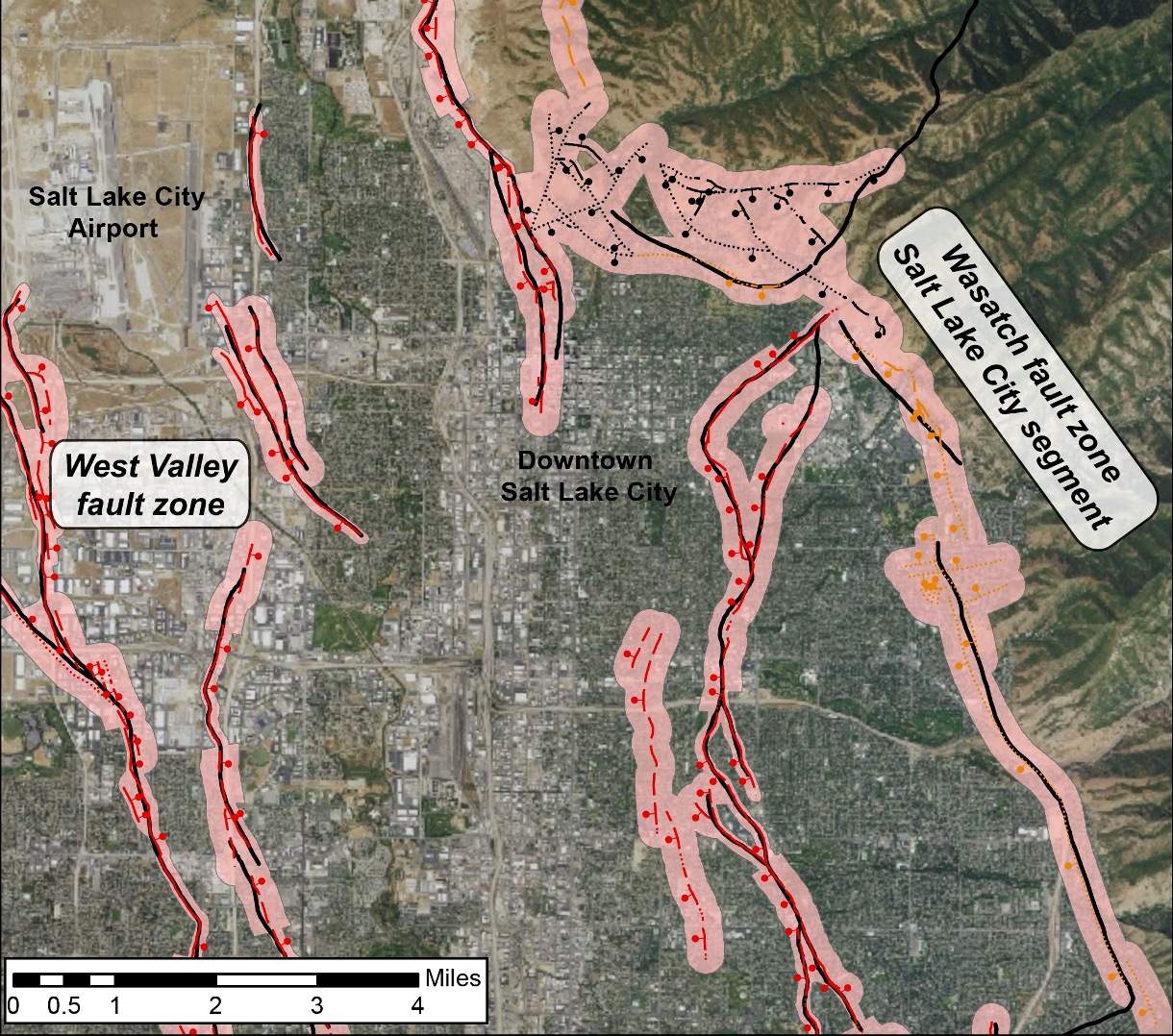Tectonic Significance of the New Fault Line: New Fault Line In Wyoming

The formation of the new fault line in Wyoming is a significant geological event that warrants attention. Understanding its tectonic implications is crucial for assessing potential hazards and informing land-use planning decisions.
The fault line is a result of the ongoing collision between the North American and Pacific tectonic plates. As the Pacific Plate moves westward, it subducts beneath the North American Plate, creating immense pressure and stress within the Earth’s crust. This stress has caused the formation of the new fault line, which is located in the central part of Wyoming.
Seismic Hazards
The presence of the new fault line poses potential seismic hazards to the surrounding area. Earthquakes occur when there is a sudden release of energy along a fault line. The magnitude and frequency of earthquakes depend on the size and characteristics of the fault line. The new fault line is relatively small, but it is located in a region that has experienced moderate to large earthquakes in the past. Therefore, it is important to assess the seismic hazard potential of the fault line and take appropriate mitigation measures to reduce the risk of earthquake damage.
Impact on Surrounding Area, New fault line in wyoming
The new fault line may also have an impact on the surrounding area in other ways. Fault lines can act as barriers to groundwater flow, which can affect the availability of water resources. Additionally, the movement along the fault line can cause ground deformation, which can damage infrastructure and buildings. It is important to conduct detailed studies to understand the potential impacts of the fault line and develop strategies to minimize its effects on the surrounding area.
Environmental and Economic Implications

The discovery of the new fault line in Wyoming has significant environmental and economic implications for the region. Understanding these impacts is crucial for developing mitigation strategies and ensuring the well-being of communities and ecosystems.
Environmental Impacts
The fault line poses several potential environmental hazards, including:
- Seismic activity: Earthquakes along the fault line can cause ground shaking, landslides, and liquefaction, damaging infrastructure, disrupting ecosystems, and posing risks to human safety.
- Groundwater disruption: The fault line can alter groundwater flow patterns, potentially affecting water availability and quality for nearby communities and ecosystems.
- Habitat fragmentation: The fault line may create physical barriers, fragmenting wildlife habitats and disrupting ecological connectivity.
Economic Implications
The fault line can also have substantial economic implications:
- Infrastructure damage: Earthquakes and other seismic events can damage roads, bridges, buildings, and other infrastructure, leading to costly repairs and disruptions to transportation and economic activity.
- Business disruption: Seismic events can force businesses to close temporarily or relocate, resulting in lost revenue and job losses.
- Property values: The presence of a fault line can decrease property values in affected areas, impacting homeowners and real estate markets.
Mitigation Strategies
To minimize the negative effects of the fault line, various mitigation strategies can be implemented:
- Seismic building codes: Enforcing strict building codes that require earthquake-resistant construction can reduce the risk of damage during seismic events.
- Land use planning: Restricting development in areas with high seismic risk can help prevent future damage and loss of life.
- Earthquake early warning systems: Installing earthquake early warning systems can provide valuable time for people to seek shelter and prepare for potential seismic activity.
Scientific Research and Monitoring

Scientific research is crucial for understanding the behavior and potential hazards associated with the newly discovered fault line in Wyoming. Geologists and seismologists are conducting various studies to gather data and gain insights into the fault’s characteristics, activity, and implications.
Methods for Monitoring the Fault Line
To track the fault line’s activity, scientists employ a range of monitoring techniques:
- GPS measurements: Global Positioning System (GPS) receivers are installed near the fault to detect subtle ground movements that may indicate fault creep or strain buildup.
- Seismic monitoring: Seismometers are deployed to record seismic waves generated by earthquakes or other seismic events along the fault line.
- InSAR (Interferometric Synthetic Aperture Radar): Satellite-based radar technology measures ground deformation by analyzing changes in radar signals reflected from the Earth’s surface.
These monitoring methods provide valuable data on fault slip rates, strain accumulation, and earthquake activity, which are essential for assessing the fault’s seismic hazard potential.
Importance of Ongoing Research and Monitoring
Continued research and monitoring are vital for understanding the long-term behavior of the fault line and its potential impact on the surrounding area. By gathering data over time, scientists can:
- Determine the fault’s slip rate and recurrence interval for earthquakes.
- Identify areas that are most susceptible to ground shaking and other earthquake-related hazards.
- Develop models to forecast future earthquake activity and assess the associated risks.
This information is crucial for developing effective earthquake preparedness and mitigation strategies, ensuring the safety of communities and infrastructure in the region.
Beneath the sprawling Wyoming landscape, a new fault line emerges, a stark reminder of the Earth’s ever-shifting nature. Like the celestial battle between tigers and angels , this fissure represents a profound divide, a clash of forces both within and beyond our comprehension.
Yet, amidst the chaos, a sense of resilience lingers, as the Wyoming fault line serves as a testament to the Earth’s enduring ability to transform and rebuild.
As the new fault line in Wyoming continues to intrigue scientists, sports enthusiasts are eagerly awaiting the USA vs. Uruguay prediction. This highly anticipated soccer match promises an exciting showdown between two formidable teams. Yet, amidst the anticipation, the geological significance of the Wyoming fault line remains a testament to the ever-evolving nature of our planet.